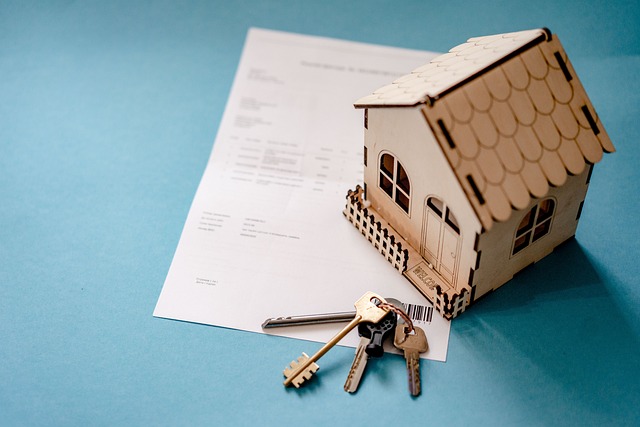Buying a house is a dream for many people, but obtaining a mortgage can be a daunting task, especially if you have poor credit.
From having to qualify for the loan to making monthly payments for years, the process can be overwhelming and, for some, a mortgage can be unobtainable.
However, there are alternative ways to buy a house without taking on a mortgage that can reduce the stress of getting on the housing ladder.
Here, I’ll explore some tips and strategies to help you achieve that goal.
1. Buy a house with cash
This is the easiest way to buy a house without a mortgage but of course it depends on you having a large pile of cash to hand.
Given the price of property, for most people it’s simply not possible to buy a house with cash if they can’t get a mortgage.
However, if you’re lucky enough to have a bulging bank account then this will be an option, although there are certain pros and cons to consider.
The pros of buying a house with cash
1. No Mortgage Payments
Perhaps the most obvious benefit of buying a house with cash is that there are no mortgage payments to make.
This can save a significant amount of money in the long run, as borrowers are not paying interest on a mortgage.
2. Negotiating Power
Cash buyers may have an advantage in negotiations, as they are able to make a quick and decisive offer without having to rely on financing.
Sellers may be more inclined to accept a cash offer, as it is more likely to close quickly and with fewer complications.
Estate agents will certainly put this forward as a positive position if there are multiple offers on the table.
3. Lower Completion Costs
Completion costs associated with buying a home are typically lower for cash buyers, as there is no need for a mortgage lender to be involved.
4. Peace of Mind
Buying a house outright with cash can provide a sense of security and peace of mind, as there is no risk of foreclosure or defaulting on a mortgage.
Most people aspire to paying off their mortgage before they retire, comfortable in the knowledge that no-one can take their home away if they fall on hard financial times.
The cons of buying a house with cash
1. Opportunity Cost
Using cash to buy a house outright means that the money is tied up in the property and not available for other investments or opportunities.
Also, depending on the rate of interest available on savings compared to the mortgage rate you can secure, it could make more financial sense to keep the money in the bank rather than pay off your mortgage.
In some cases, it may be more financially advantageous to invest the cash in other opportunities that have a higher rate of return than the interest saved on a mortgage.
2. Loss of Liquidity
Buying a house with cash means that the money is no longer readily available in case of emergencies or unexpected expenses.
Even if you are lucky enough to be able to buy a house with cash, it’s always wise to not blow it all but keep a fund aside for a rainy day.
3. Lack of Credit Score Improvement
While paying cash for a house can save money in the long run, you’ll miss out on the opportunity to improve your credit score by paying your mortgage back on time.
Of course, there are other ways to build your credit score, such as by taking out a credit card or even buying a mobile phone on credit and keeping up with the payments, but paying a mortgage still commands a lot of weight.
4. No Tax Benefits
Homeowners with mortgages can deduct mortgage interest from their income tax liability, which can result in significant tax savings.
Cash buyers do not have this benefit and will have to balance whether the other pros outweigh this saving.
Is Buying a House Outright with Cash a Good Idea?
Buying a house outright with cash can be a good idea for some individuals who have a substantial amount of money saved and are looking for a sense of security and peace of mind.
However, it’s important to weigh the pros and cons and consider individual circumstances before making a final decision.
For those who prioritise liquidity and flexibility, it may be more advantageous to keep the cash available for other investments or opportunities.
Additionally, those looking to improve their credit score may benefit from taking out a mortgage and making timely payments.
It’s important to weigh the benefits and drawbacks and make a decision based on your personal circumstances and financial goals.
As with any major financial decision, it’s important to do thorough research and consult with professionals before making a final decision.
2. Consider Owner Financing
Owner financing – also known as seller or vendor financing – is an option where the seller of the property acts as the lender and finances the purchase for the buyer.
In this arrangement, you make payments directly to the seller instead of a traditional mortgage lender.
Owner financing can be a win-win situation for both parties.
The seller can sell their property without having to wait for a buyer to secure a mortgage, and you can buy a house without having to go through the mortgage qualification process.
However, it’s crucial that you get a conveyancing solicitor to review the contract and ensure that you understand the terms and conditions.
The pros of owner financing
1. Easier qualification
One of the primary benefits of owner financing is that it can be easier to qualify for than traditional financing.
This is especially true for buyers with less than perfect credit or those who have difficulty obtaining a mortgage from a bank.
With owner financing, the seller is more likely to consider other factors such as the buyer’s income and employment history.
2. Flexible Terms
Owner financing allows for more flexibility in terms of the repayment schedule and interest rate.
The seller and buyer can negotiate the terms of the loan, including the interest rate, repayment period, and balloon payments.
This can make the loan more affordable for the buyer and more profitable for the seller.
3. Faster Completion
Since owner financing eliminates the need for a traditional mortgage, the completion process can be much faster.
There’s no need to wait for the lender to approve the loan, which can take several weeks or even months.
This can be particularly advantageous in a competitive real estate market where properties are selling quickly.
The cons of owner financing
1. Higher Interest Rates
One of the main drawbacks of owner financing is that the interest rates can be higher than those of traditional mortgages.
This is because the seller is taking on more risk by financing the purchase, and they may charge a higher interest rate to compensate for that risk.
2. Limited Options
Not all sellers are willing or able to offer owner financing.
This can limit the buyer’s options when searching for a property to purchase.
Additionally, the seller may only be willing to finance a portion of the purchase price, which means the buyer will need to come up with the remainder of the funds.
3. Default Risk
If the buyer defaults on the loan, the seller can foreclose on the property and take possession.
This can be a costly and time-consuming process for the seller.
Additionally, if the buyer has made improvements to the property, the seller may not be able to recoup the full value of those improvements.
Is owner financing a good idea?
Owner financing can be a great option for buyers who have difficulty obtaining a traditional mortgage or who want more flexibility in the repayment terms.
However, it’s important to carefully consider the pros and cons before entering into an owner financing agreement, especially as the arrangement is likely to cost more over the long run.
3. Look for rent-to-buy properties
Rent-to-buy – or rent-to-own – is another option to consider when buying a house without a mortgage.
In this arrangement, you rent the property for a specific period with a portion of your rent going towards a deposit on the home as you’re given the option to buy it at a predetermined price.
Rent-to-own properties can be beneficial for people who may not have enough money for a deposit but are still interested in owning a home.
How rent-to-buy properties work
In a rent-to-buy agreement, the buyer and seller agree to a purchase price for the property, and the buyer typically pays an option fee to secure the right to purchase the property.
The option fee is typically 1-5% of the purchase price and is non-refundable.
The buyer then moves into the property and pays rent, a portion of which is credited towards the down payment on the property.
The length of the lease term and the portion of rent that is credited towards the down payment can vary.
Typically, the lease term is 1-3 years, and 10-20% of the rent is credited towards the deposit.
At the end of the lease term, the buyer has the option to purchase the property at the agreed-upon price.
Pros of rent-to-own properties
1. Easier qualification
Rent-to-own properties can be a good option for buyers who have difficulty qualifying for a traditional mortgage.
Since the buyer is essentially renting the property, there are fewer requirements for creditworthiness and income.
2. Time to save for a deposit
For buyers who don’t have enough saved for a deposit, a rent-to-buy agreement can provide time to save up the necessary funds.
By making rent payments and saving a portion of that towards a down payment, buyers can work towards their goal of homeownership.
3. Opportunity to test the property
Since buyers are essentially renting the property during the lease term, they have the opportunity to test it out and determine if it’s a good fit for their needs.
If they decide not to purchase the property at the end of the lease term, they can walk away without penalty.
Cons of rent-to-own properties
1. Non-refundable option fee
The option fee paid by the buyer is non-refundable, even if they decide not to purchase the property at the end of the lease term.
This can be a significant amount of money, so buyers should carefully consider whether they’re committed to purchasing the property before entering into a rent-to-own agreement.
2. High purchase price
The purchase price for a rent-to-own property is typically higher than the market value of the property.
This is because the seller is taking on more risk by holding the property and financing the purchase.
Buyers should carefully consider whether the higher purchase price is worth the convenience of a rent-to-own agreement.
3. Repairs and maintenance
In most rent-to-own agreements, the tenant is responsible for repairs and maintenance on the property.
Buyers should carefully consider the condition of the property before entering into an agreement and budget for any necessary repairs.
Is rent-to-own a good idea?
Rent-to-buy properties can be a good option for buyers who have difficulty qualifying for a traditional mortgage or who need time to save for a down payment.
However, buyers should carefully consider the terms of the agreement, including the non-refundable option fee, higher purchase price, and responsibility for repairs and maintenance.
It’s important to work with a conveyancing solicitor to ensure the agreement is fair and legally binding.
4. Shared equity or co-ownership
Shared equity or co-ownership is an arrangement where two or more parties buy a property together and split the costs and profits.
This option can be helpful for people who may not qualify for a mortgage on their own but have friends or family members who are willing to invest in the property.
In this arrangement, it’s crucial to have a legal agreement that outlines the responsibilities and obligations of each party.
How shared equity or co-ownership properties work
In a shared equity or co-ownership arrangement, multiple parties come together to purchase a property.
Each party has a percentage of ownership and equity in the property, based on their initial investment.
The percentage of ownership can be equal or vary based on the amount of investment. The parties then share the costs of the property, such as mortgage payments, maintenance, and repairs.
There are different ways to structure a shared equity or co-ownership arrangement.
One common method is a tenants-in-common agreement, in which each party owns a specific share of the property and can sell their share without the consent of the other owners.
Another method is a joint tenancy agreement, in which each party has an equal share of ownership and the property automatically transfers to the surviving owners in the event of death.
The pros of shared equity or co-ownership properties
1. More Affordable
One of the biggest benefits of share equity or co-ownership properties is that they are more affordable than purchasing a property outright.
Each party contributes a portion of the down payment and ongoing costs, making it possible for people who might not be able to afford a home on their own to enter the housing market.
2. Shared costs and responsibilities
In a share equity or co-ownership arrangement, the costs and responsibilities of the property are shared among the owners.
This can make it more manageable for each owner and can provide a sense of community and support.
3. Flexibility
Shared equity or co-ownership properties can offer more flexibility than traditional home ownership.
For example, if one owner wants to sell their share, they can do so without selling the entire property.
This can also make it easier to enter and exit the housing market as needed.
The cons of shared equity or co-ownership properties
1. Legal agreements
It’s important for buyers to have a legal agreement in place before entering into a share equity or co-ownership arrangement.
This agreement should outline the percentage of ownership for each party, the responsibilities and costs of each party, and the process for selling shares or exiting the agreement.
2. Compatibility with co-owners
Buyers should carefully consider the compatibility of potential co-owners before entering into an arrangement.
It’s important to have open and honest communication about expectations, responsibilities, and financial contributions to ensure a smooth and successful partnership.
3. Potential for disagreements
Even with a solid legal agreement and good communication, there is always the potential for disagreements or disputes among co-owners.
Buyers should carefully consider their own conflict resolution skills and be prepared for the possibility of disagreements with their co-owners.
Is co-ownership a good idea?
Shared equity or co-ownership properties can be a great option for buyers who want to enter the housing market but can’t afford to purchase a home outright.
However, it’s important for buyers to have a legal agreement in place, carefully consider the compatibility of potential co-owners, and be prepared for the potential for disagreements.
With proper planning and communication, shared equity or co-ownership properties can provide a successful and affordable path to home ownership.
5. Consider a home equity line of credit (HELOC)
A home equity line of credit (HELOC) is a loan that uses the equity in your current home as collateral.
As such, it’s only suitable for people looking to buy a second home or investment property, and not first time buyers.
However, if you are in the market for a second property, this option allows you to borrow money for a down payment or to purchase a house outright.
HELOCs typically have lower interest rates than traditional mortgages, and you only pay interest on the amount you borrow.
However, it’s essential to understand the risks involved in using your home as collateral and to make sure you can afford the payments.
How does a HELOC work for buying a house?
Using a HELOC to buy a house works by accessing the equity in an existing home to use as a down payment on a new home.
The borrower takes out a HELOC, which allows them to borrow up to a certain amount of money, and then uses the funds from the HELOC as a down payment on the new home.
The HELOC is then repaid over time, typically with interest.
The pros of using a HELOC to buy a house
1. Access to Funds
Using a HELOC can provide immediate access to funds for a down payment, without having to sell the current home first.
2. Lower Interest Rates
HELOCs may have lower interest rates than other types of loans, such as personal loans or credit cards.
3. Tax Deductible
Interest paid on a HELOC may be tax deductible, making it a potentially cost-effective option for some borrowers.
The cons of using a HELOC to buy a house
1. Risk
Using a HELOC to buy a house can be risky, as it increases the amount of debt secured against the home.
If the borrower is unable to make payments on the HELOC, they could risk losing their home.
2. Fees
HELOCs may come with fees, such as appraisal fees, application fees, and annual fees, which can add up and increase the overall cost of the loan.
3. Variable Interest Rates
HELOCs often come with variable interest rates, which means that the interest rate can change over time.
This can make it difficult for borrowers to plan for the long-term costs of the loan.
Is using a HELOC to buy a house a good idea?
Using a HELOC to buy a house can be a good idea for some borrowers, but it’s important to carefully weigh the pros and cons and consider individual circumstances.
Borrowers should be confident in their ability to repay the HELOC, and should have a solid plan in place for the long-term costs of the loan, including interest, fees, and potential changes in interest rates.
Conclusion
Buying a house without a mortgage is possible with some planning, research, and creativity.
You’ll need to carefully consider your current financial situation and long-term goals before taking this route though.
However, if you find yourself unable to get a mortgage but are desperate to own your own home then one of the options above might be for you.











